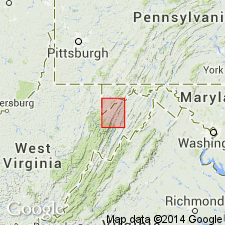
- Usage in publication:
-
- Tuscarora quartzite*
- Modifications:
-
- Original reference
- Dominant lithology:
-
- Quartzite
- AAPG geologic province:
-
- Appalachian basin
Summary:
(Credited to N.H. Darton, Piedmont folio, WV-MD, no. 28, and Franklin folio, WV-VA, no. 32.) Tuscarora quartzite. White and gray massive quartzite, 250 to 480 feet thick. Underlies the red Cacapon sandstone and overlies the red Juniata formation. Is a part of the Medina of early reports on this region. Assigned to Silurian.
[Origin of name not stated.]
Source: US geologic names lexicon (USGS Bull. 896, p. 2201).
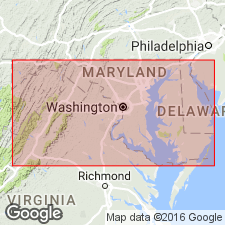
- Usage in publication:
-
- Tuscarora quartzite
- Modifications:
-
- Principal reference
- AAPG geologic province:
-
- Appalachian basin
Summary:
Pg. 172-188. Tuscarora formation (white Medina sandstone) of Appalachian region of Maryland is chiefly sandstone, hard and massive, generally white or gray. Few fossils have been found, but it is undoubted equivalent of white Medina sandstone to north. Is found at widely separated points in Appalachian district. Is 1,500 feet thick in western part of district. Assigned to Silurian.
Named from Tuscarora Mountain, PA, [which extends along border line of Juniata and Perry Cos., central southern PA].
Source: US geologic names lexicon (USGS Bull. 896, p. 2201).
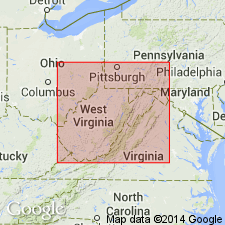
- Usage in publication:
-
- Tuscarora Formation
- Modifications:
-
- Revised
- AAPG geologic province:
-
- Appalachian basin
Summary:
The Tuscarora Formation is included as the uppermost formation in the Judy Gap Group of WV. Overlies the Juniata Formation of the Judy Gap Group and underlies the Clinton Group.
Source: GNU records (USGS DDS-6; Reston GNULEX).
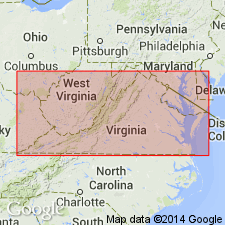
- Usage in publication:
-
- Tuscarora Sandstone
- Modifications:
-
- Age modified
- AAPG geologic province:
-
- Appalachian basin
Summary:
Authors believe the Ordovician-Silurian boundary falls within the Tuscarora Sandstone. They claim that an unconformity lies between the lower and upper Tuscarora, and it is within this hiatus of about 8 m.y. that the boundary occurs.
Source: GNU records (USGS DDS-6; Reston GNULEX).
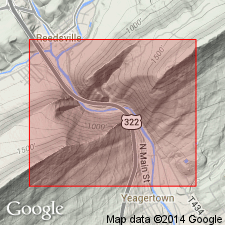
- Usage in publication:
-
- Tuscarora Formation
- Modifications:
-
- Biostratigraphic dating
- AAPG geologic province:
-
- Appalachian basin
Summary:
A second eurypterid occurrence from the Tuscarora is reported at the Kishacoquillas Gap, central PA. It occurs in either a nonmarine or a brackish-estuarine environment. A definite age cannot be determined, but it is probably Llandoverian.
Source: GNU records (USGS DDS-6; Reston GNULEX).
For more information, please contact Nancy Stamm, Geologic Names Committee Secretary.
Asterisk (*) indicates published by U.S. Geological Survey authors.
"No current usage" (†) implies that a name has been abandoned or has fallen into disuse. Former usage and, if known, replacement name given in parentheses ( ).
Slash (/) indicates name conflicts with nomenclatural guidelines (CSN, 1933; ACSN, 1961, 1970; NACSN, 1983, 2005, 2021). May be explained within brackets ([ ]).

